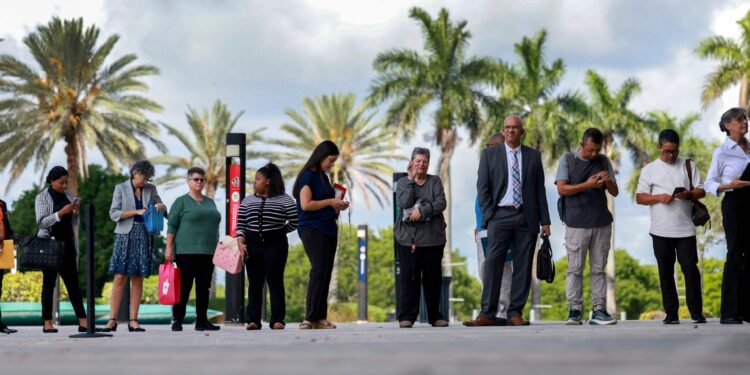The U.S. economy continues to show remarkable resilience, driven by strong consumer spending, even as fears of an impending recession persist.
Bloomberg says the latest data points to an annual growth rate of 3% in the second quarter of 2024, thanks to American consumers who continue to stimulate economic momentum despite rising borrowing costs and inflation pressures.
This consumer growth comes at a time when inflation rates have slowed, while the Federal Reserve is discussing the possibility of cutting interest rates in the coming months.
However, the strength of the consumer sector comes with some underlying concerns, Forbes said. While spending remains strong, the pace of income growth has slowed, the labor market has become softer, and the savings rate has declined.
These factors, according to Forbes, have raised questions about the sustainability of consumer spending as a major driver of economic growth, especially in light of continuing economic uncertainty.
Indicators of recession and possible slowdown
Despite the positive numbers, there are indications that the US economy may be on the verge of recession, according to Forbes.
The Saham Rule, a historically reliable indicator of recession prediction, suggests an economic slowdown is likely with unemployment rising from 3.5% to 4.3% over the past year.
This rise in unemployment is a concern, as job losses typically lead to reduced consumer spending, which in turn can slow economic growth.
In addition, the yield curve, a common indicator of recession prediction, has been pointing to the possibility of an economic slowdown for nearly two years.
According to the New York Federal Reserve’s analysis, there is currently a 50% chance of a recession in the next 12 months, Forbes reports. This continued warning, coupled with rising unemployment, suggests that the U.S. economy could face significant challenges in the near future.
Federal Reserve and its Policy
As the Federal Reserve discusses its next steps, the possibility of a rate cut has become a major focus, something Fed Chairman Jerome Powell hinted at in his recent speech in Jackson Hole.
A rate cut could provide additional support to consumer spending, which has been the backbone of recent economic growth. However, some Bloomberg analysts warn that even with a rate cut, broader economic challenges — including stagnant incomes and rising unemployment — could dampen the overall economic outlook.
The stock market’s performance adds another layer of complexity to the economic landscape, according to Forbes. After a slight decline in early August, the S&P 500 has recovered to near its recent highs, suggesting that financial markets have not yet priced in an impending recession.
However, the upcoming jobs report, due out on September 6, will be a crucial indicator of the health of the economy. Any further increase in unemployment could undermine consumer confidence and possibly lead to a more pronounced economic slowdown.
Resilience or stagnation?
As 2024 progresses, the interplay between consumer spending, monetary policy, and recession indicators will be crucial in determining the path of the U.S. economy.
Although the economy has so far defied recession predictions, the risks of recession cannot be ignored. The Fed’s decisions in the coming months will be pivotal in shaping the future economic landscape, with significant implications for both consumers and businesses.



